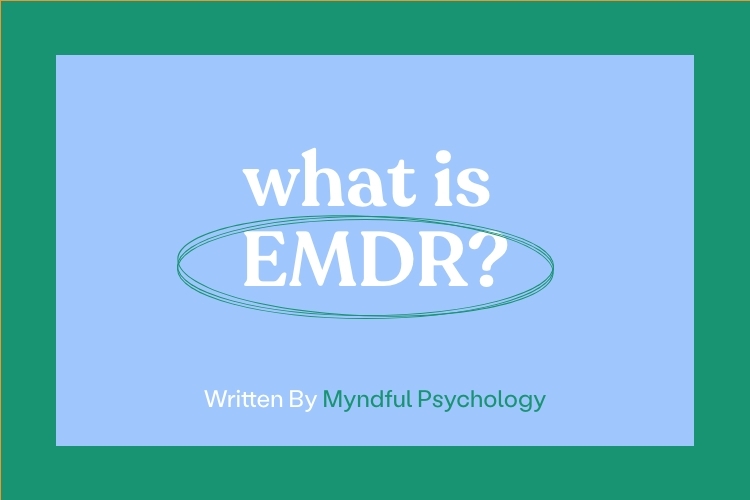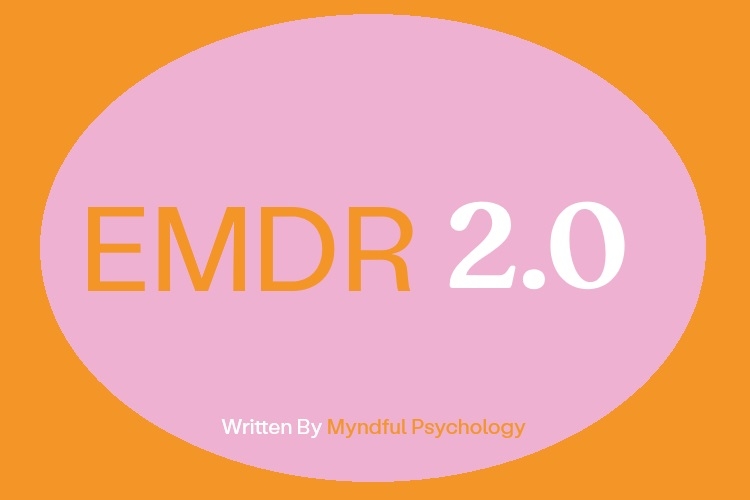EMDR
Eye Movement Desensitisation and Reprocessing
Eye Movement Desensitisation and Reprocessing (EMDR) therapy is a psychological treatment that helps people recover from distressing life experiences, trauma and PTSD. Recognised by organisations such as the World Health Organization (WHO) and the Australian Psychological Society (APS), EMDR has a strong scientific evidence base for treating trauma, post-traumatic stress disorder (PTSD) and is also used for other conditions, including anxiety, phobias, and depression.
This guide provides a clear overview of EMDR therapy and answers the most common questions people have before starting treatment.
How EMDR Works
EMDR is a structured psychological therapy that helps reprocess traumatic memories so they no longer trigger intense emotional or physical reactions. Rooted in the Adaptive Information Processing (AIP) model, EMDR recognises that the brain normally processes experiences in a way that supports learning and recovery. However, when trauma overwhelms this system, memories—and the distressing emotions, thoughts, and physical sensations linked to them—can become “stuck,” replaying as if the event is happening again.
During EMDR sessions, a trained psychologist guides clients to recall aspects of these memories while engaging in bilateral stimulation, such as side-to-side eye movements, rhythmic tapping, or alternating sounds. This dual attention process activates both hemispheres of the brain, helping to “unstick” and reprocess the memory. Over time, the memory is integrated in a healthier way, its emotional intensity diminishes, and it takes on a more neutral meaning.
By unblocking the brain’s natural processing, EMDR allows individuals to think about past events with greater calm, perspective, and emotional resilience.
The 8 Phases of EMDR Therapy
EMDR therapy follows a structured 8-phase approach, over a course of sessions with your psychologist, that helps individuals safely process and reframe traumatic memories.
These phases include understanding your history, preparing for treatment, identifying key memories and beliefs, using bilateral stimulation to reduce distress, and strengthening positive thoughts. The process also involves checking for lingering physical responses and reviewing progress over time.
This structured method ensures EMDR is delivered safely, effectively, and in a way that supports lasting emotional healing.
Is EMDR Effective?
Yes, multiple clinical studies have shown EMDR to be effective for PTSD and trauma-related conditions. It is recommended by the World Health Organization (WHO) and the Australian Psychological Society (APS).
In many cases, EMDR can achieve results faster than traditional therapies such as cognitive behavioural therapy (CBT), especially for single-incident trauma.
Benefits of EMDR Therapy
EMDR is considered one of the most effective forms of trauma therapy.
Clients often report:
- Reduced intensity and emotional charge of traumatic memories
- Improved emotional regulation and coping skills
- Greater self-awareness and self-esteem
- Relief from symptoms of PTSD, anxiety, and depression
- A more positive outlook on past events and future challenges
How Do I Know If EMDR Is Right for Me?
If your psychologist determines that EMDR is the appropriate treatment for you, they will incorporate it into your therapy to help you process distressing experiences. Typically, EMDR is delivered as part of an ongoing course of therapy over several months.
When delivered by a qualified psychologist, EMDR is suitable for both adults and children who have experienced trauma—whether from a single event or from ongoing experiences over months or years.
While EMDR is most widely known for treating Post-traumatic stress disorder (PTSD), it is also used to address:
- Witnessing or experiencing violence, including domestic violence or physical assault
- Childhood abuse, whether physical, emotional, or sexual
- Experiencing sexual assault
- Bullying
- Being involved in a serious accident, such as a motor vehicle crash
- Living through a natural disaster, including floods, bushfires, hurricanes, or earthquakes
- Exposure to military combat or war-related trauma
- Anxiety, fears, and phobias
- Attachment issues (anxious-attachment, avoidant-attachment and emeshment)
- Grief or unresolved loss
- Sudden life events e.g., breakups, job loss
- Medical trauma such as serious injury, illness, frigtening medical procedures, or difficult hospital stays
- Chronic pain and chronic illness
Are There Risks or Side Effects?
EMDR is generally considered safe when conducted by a qualified professional. However, because it involves recalling distressing events, some people may experience:
- Temporary emotional distress
- Vivid dreams
- Fatigue after sessions
- Heightened emotions between sessions
These effects usually lessen as treatment progresses.
Can EMDR Be Combined with Other Therapies?
Yes, many practitioners integrate EMDR with other evidence-based approaches such as CBT, mindfulness-based therapies, or body-based therapies (e.g. yoga and somatic movement). This can be especially helpful for complex trauma.
How Quickly Does EMDR Work?
Results vary depending on the nature of the trauma and individual factors. Some clients report significant improvement within 3–6 sessions, particularly for single-event trauma. More complex or long-term trauma may require a longer treatment plan.
The Bottom Line
EMDR therapy is a proven, evidence-based approach to processing trauma and reducing symptoms of PTSD, anxiety, and related conditions. If you’re considering EMDR, speak to a qualified mental health professional to explore whether it’s the right choice for you.
EMDR Intensive
An EMDR Intensive Therapy Program is an accellerated, structured therapy approach that provides multiple hours of EMDR therapy over a condensed timeframe. Unlike traditional weekly or fortnightly sessions, EMDR Intensive Therapy offers a focused, immersive format that supports faster and more effective processing of trauma, anxiety, and distressing life experiences.
Learn More About EMDR
Discover more about EMDR therapy in our blog.


